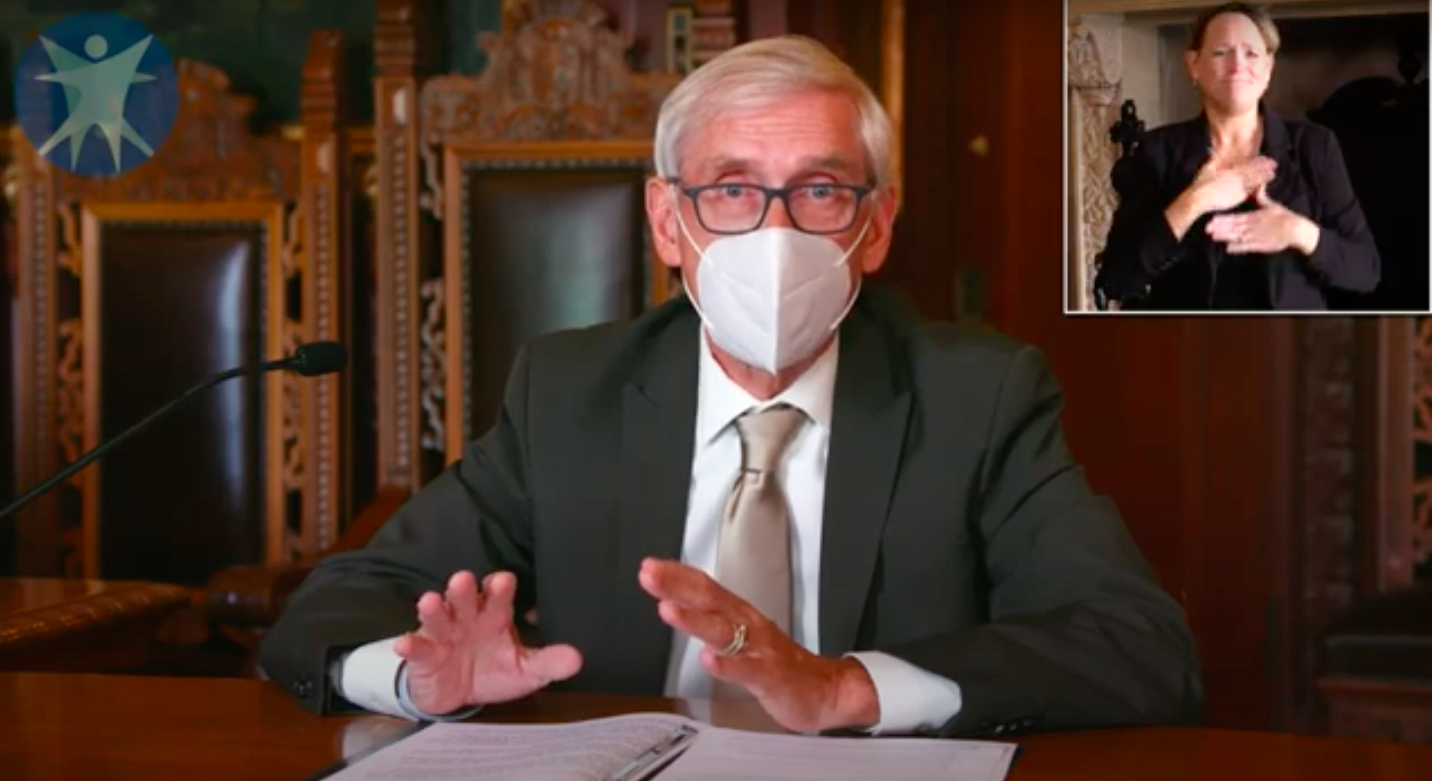
Dan O’Donnell analyzes the Governor’s executive order declaring a second state of emergency over Coronavirus and finds that it is unlawful and likely unconstitutional
July 31, 2020
Special guest perspective by Dan O’Donnell
Wisconsin Governor Tony Evers shocked the state Thursday by issuing a statewide mask mandate, bringing to a boil the simmering debate over the efficacy of mask-wearing in the fight against Coronavirus.
That debate, however, isn’t the one Wisconsin should be having. Instead, it should question whether Evers has the authority to issue an emergency order to begin with.
On Thursday, Evers issued Executive Order 82, which declared “that a public health emergency…exists for the State of Wisconsin.”
The Governor’s authority to declare a public health emergency rests in Wisconsin Statute § 323.10, which provides that “if the governor determines that a public health emergency exists, he or she may issue an executive order declaring a state of emergency related to public health for the state or any portion of the state.” This state of emergency is not infinite, however. It “shall not exceed 60 days, unless the state of emergency is extended by joint resolution of the legislature.”
One might recall that this is the second time in five months that Evers has declared a public health emergency over the Coronavirus outbreak, having first done so on March 12th in an executive order that paved the way for the subsequent “Safer at Home” emergency order that locked down much of Wisconsin until the State Supreme Court struck it down in mid-May.
The Court explicitly did not “address the Governor’s order” declaring a state of emergency and instead based its ruling on an emergency order issued pursuant to that executive order, but it is clear that the Governor has the authority to declare a state of emergency only for 60 days unless the Wisconsin Legislature agrees to an extension.
Declaring a second state of emergency for the exact same virus with no fundamental change in the nature of either the virus itself or the public response to it amounts to an unlawful and unconstitutional attempt to extend a public health emergency beyond the statutory limit of 60 days.
It violates both the letter and the spirit of Wisconsin Statute § 323.10.
The purpose of a 60-day limit on states of emergency is to rein in the otherwise unchecked power of Wisconsin’s Executive Branch. The existence of an emergency grants the Governor and the Executive Branch departments under his control powers that they would not normally be constitutionally authorized to assume.
For instance, on July 7th, Evers himself said that he did not have the unilateral power to make all Wisconsinites wear masks.
“I had an interesting call from a business leader just the other day [saying] ‘Please, please mandate the masks,” he said during a news conference. “Our ability to thrive economically as a state is counting on this virus being handled appropriately and he asked me to do it and I talked to him about the possibilities of it being challenged in court, which is about 100 percent, and our chances of losing in the Supreme Court, which is very close to 100 percent, and he said ‘Do it anyway.’”
Evers, of course, declined to do so, recognizing that he did not have the legal authority under normal circumstances. Once he declared a public health emergency, however, his enhanced power to issue orders aimed at protecting public health allow for what might have otherwise been an unconstitutional overreach of executive authority.
It should not be lost on the public that Evers’ mask order goes into effect on the exact day that liberal Jill Karofsky is sworn in to replace conservative Supreme Court Justice Daniel Kelly, whom she defeated in April and who was one of the four votes to overturn “Safer at Home” in the Court’s 4-3 decision.
Just as the Supreme Court is a check on both the Legislative and Executive Branches, so too is the Legislative a check on the Executive. This is, of course, the reason that only the Legislature is given the power under Statute § 323.10 to extend a state of emergency beyond 60 days.
If the two political branches agree that a crisis—in this case Coronavirus—is dire enough that the Governor should continue to be able to exert extraordinary authority to fight it (and in so doing usurp authority from the Legislature) , then the Legislature must consent to it.
Consider this: On May 10th, 60 days after the Governor’s original public health emergency declaration, there were 211 positive tests for Coronavirus. On July 29th, the day before Governor Evers issued his second emergency declaration, there were 870 new cases.
The Governor is using the rapid rise in new cases to claim that the situation has changed so dramatically that he has no choice but to declare a new emergency, but a closer look at the numbers reveals this to be nonsense. On July 29th, there were 13,824 new Coronavirus tests performed. The new positive rate was 5.9%. On May 10th, there were only 3,508 tests performed. The 211 positives represented 7.99% of the total. In other words, Coronavirus was far more likely to be detected on May 10th than it was on July 29th.
Could Governor Evers have simply declared a new state of emergency to replace the one that was going to expire? Of course not, because it would have been an obvious attempt at extending his emergency authority without proper legislative authorization.
Yet that is precisely what Evers has attempted to do on with the order he issued on July 29th. While there are more cases, the uptick is due in large part to a dramatic increase in the number of tests performed. There has been no dramatic increase in either hospitalization or death rates or in raw numbers of hospitalizations or deaths. If anything, the virus is getting—statistically speaking—less dangerous, not more.
On May 9th, the day before Evers’ original state of emergency expired, there were 14 deaths in Wisconsin. On July 29th, the day before he issued a new state of emergency, there were 5. On May 10th, the day the original state of emergency expired, 511 people were hospitalized with Coronavirus. On July 29th, the day before Evers issued his second order, there were 297.
There is, quite simply, no medical or legal justification for Evers to declare a second public health emergency. It is nothing more than a power grab and an unconstitutional end-around of legislative checks and balances.
